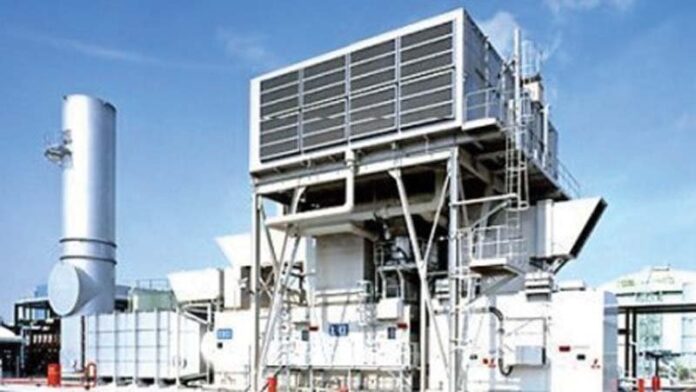“Tumharay ghar mein kya pani nahin ata?”
It seems pertinent to begin this piece by noting that Profit has a team of two reporters in Karachi, only one of which receives actual water from an actual water line; the other has to ration water supplied from a tanker (and also has to suffer the other reporter’s complete glee at having actual water whenever they want). Upon conversation with the tanker-wala, this reporter also discovered that the water in their home was supplied from Balochistan, and took three days by road to reach their home, start to finish.
Why, exactly, does this (privileged, for sure) reporter still not have access to a water line in Karachi? The real question is: why does most of Karachi not seem to have access to water in their homes? For Pakistan’s largest and most tax-paying city to have such a critical problem seems absurd.
Which is why any time any Karachi-wala’s ears perk up when they hear of yet another solution. And so, this made the rounds: On December 11, Hub Power Company Ltd announced that it had entered into a memorandum of understanding with the Pakistan Defence Officers Housing Authority, more commonly known as DHA, so that it could revive the DHA Cogen desalination plant.
This will generate 84 MW of electric power to K-Electric, and also provide 3 million gallons per day of water to Cantonment Board Clifton. Additionally, Hubco and DHA also plan to develop a project which will provide 5 million gallons per day based on ‘Sea Water Reverse Osmosis technology’, also known as desalination.
“The purpose of this MOU is to jointly evaluate the commercial and technical viability of revival of DHA Cogen Ltd and setting up the 5 Million gallons per day Sea Water Reverse Osmosis Project at the site of DHA Cogen Ltd,” the notice specified.
There are three topics to unpack here: water in Karachi, the DHA, and the plant itself. Each is controversial, but thankfully, each is also well documented. Together, they provide a lens to view Karachi’s dysfunctional and surreal problems.
Water in Karachi
Why is Karachi in the state that it is in? There are two important articles that lay out the problem: journalist Mahim Maher’s magnum opus on Karachi’s water supply in The Express Tribune (from 2012), and journalist Asad Hashim’s article on water tankers in Al Jazeera (from 2017).
In summary: Karachi gets its water from the main Indus River, which deposits whatever water is left in a man-made reservoir known as Keenjhar Lake, which is close to Thatta, Sindh and about 150 kilometres from the city.
According to the latest figures, around 670 million gallons of water a day (MGD) is sent to the city’s main pumping station at Dhabeji. That is somewhat under what the KWSB estimates is Karachi’s requirement: our minimum demand is 720 MGD, while our maximum demand is 970 MGD.
Of course the other problem is that Karachi does not even receive even the 670 MGD. Around 35% if lost or stolen, which leaves the city of Karachi with only 436 MGD.
So where is it going? The Karachi Water and Sewerage Board (KWSB) was set up recently (considering how old the city is) in 1983. At the time, neighbourhoods did not have access to the main pipelines, so tankers were sent to send water to homes.
This began the infamous tanker mafia, which most recently was estimated had a network of more than 10,000 tankers. Essentially, this tanker business was taking water from illegal hydrants dotted around the city connected to the water line. In 2012, there were technically 21 legal hydrants operated by KWSB , and 196 illegal hydrants, of which 40 were shut down. The revised figures in 2017 stood at 10 legal hydrants, and some 100 illegal hydrants still operating. Hashim estimated that stealing water in Karachi is an industry worth more than $500 million (in 2017).
Who does this affect? Everyone in Karachi, but most specifically the poorest. The areas affected most were Orangi, Baldia, Gadap, Manghopir, Qasba, Metroville, Gulshan-e-Zia, Faqeer Colony, Gulshan-e-Ghazi to name a few.
If all loss was stopped, there is still enough water in Keenjhar Lake to be able to somewhat cater to Karachi’s needs more effectively. But the bigger worry is that Keenjhar Lake is the city’s only salvation. That is because Karachi does not have groundwater it can effectively rely on. Malir, Gadap, Lyari and Hub: none of these places have enough ground reserves because it simply has not rained enough in the last decade. (And the torrential rain experienced by Karachi in the last year does not help. In fact, it is a sign of unpredictable climate that cannot be relied on).
DHA
So, where does DHA fit into this? And how is it entering into an agreement? First, some history: DHA was initially set up in 1953, as the Pakistan Defence Officers Housing Authority. This society was meant to take care of the welfare of its members, which in this case was members of defense forces. For instance, it would allot land for those members’ homes.
In 1980, then President Ziaul Haq passed a presidential order to create a Defence Housing Authority or DHA. This DHA was given extensive powers. How extensive, you ask? It could make its own rules, and be its own authority. The Clifton Cantonment Board (CCB) was set up that essentially runs DHA land. This is significant because it makes it a cantonment, which under Pakistani law, means that it is separate from the city’s local government.
Any local government system looks after municipal works, sewage, drainage, property taxation, water supplies. But Karachi’s local government system has had no say over the business of DHA or Clifton Cantonment, including their water supply, since 1980. Amendments in 1993, 2002, and 2009, allowed for the creation of cafes, cinemas, ATMs, petrol stations, shops, and schools – effectively, giving the veneer of a functioning city, without the actual local governance aspect of it.
Why is this history relevant to mention? Because it is important to recognize that the party that Hubco is entering into an agreement with is not the city government of Karachi – it is a cantonment. And though the plant will be sending water to the ‘city of Karachi’, the body dealing with it, let us be clear, has nothing to do with the governance of water, like the KWSB. It is really to supply water to Clifton Cantonment, and will do nothing to ‘solve’ the problems of the rest of the city’s water.
The Cogen plant
So that leaves us with the plant, which almost since its inception, was mired in controversy.
Essentially, in 2008, DHA and a Singapore-based company, Sacoden, joined hands to form a company called Defence Cogen Ltd (DCL). They then set up a seawater desalination and power generation plant at the southern tip of the man-made DHA Phase VIII peninsula. This was at a cost of $115 million.
The plant is supposed to generate 94 MW, which it would sell to the (then) KESC; and also to desalinate 3 million gallons of seawater, make it drinkable and sell it to the Clifton Cantonment Board.
The first weird problem: AEI Asia (Hong Kong), which is a subsidiary of Ashmore Funds (Houston, USA), acquired Sacoden’s shares in 2008, and became the majority shareholder of the company, which raised concerns about DHA’s shrinking shares.
The second problem: according to a Dawn article from 2009, the plant developed ‘faults’ in early 2008, and was shut down in September 2008. The ‘faults’ were initially meant to cost $1.5 million, but somehow ballooned to $10 million, as the DCL and warrantor squabbled over who had to pay. Apparently, the damage was in the shaft, and the warrantor claimed DCL should have shut down the entire plant, but because they did not, the rest of the plant was also damaged. At the time, many also complained about substandard materials being used in the plant.
Reportedly, the government had to ‘threaten’ DCL to finally get their act together, and start fixing things.
But then, the banks came knocking in 2014. IGI Investment Bank had extended a short term loan in November 2007 for Rs150 million to DHA Cogen. But DHA Gogen failed to pay the loan in breach of its contract. In April 2009, the bank sent a legal notice to DHA Cogen Ltd asking it to pay liabilities amounting to Rs174 million. DHA Cogen failed to pay yet again.
The bank told the Sindh High Court in 2014, that DHA Cogen had failed to commence its commercial operations within the stipulated time frame, and even though it was re-commissioned in September 2009, it was suspended a second time in May 2010. Now, it wanted an official liquidator, as it believed the company was not financially viable.
And that was that. The now defunct DHA Cogen simply lay about, while successive governments – PML-N, PTI and the local SIndh Government – all made vague promises of a desalination plant. Of course, the problem was this plant was not going to be governed by any of them – it would be a DHA project.
And now, enter Hubco, the country’s largest independent power producer (the company literally generates 10% of the country’s electricity). Its ambitious CEO, Khalid Mansoor, last year said that he wanted the company to transform into the country’s first independent ‘water’ and power producer by 2025. The first step on this arduous journey is to focus on Karachi.
Most of Mansoor’s ideas, and by extension Hubco’s, revolved around sewage treatment, and recycling plants, including sewage to potable water projects. However, this is not the case for the DHA. That is because, hysterically, perhaps the poshest residence in Karachi shares a common feature with the much poorer localities in Pakistan: lack of access to water. That is why most of Defence’s residents pay exorbitant amounts to tanker walas. The difference is, that the DHA resident does not care what they pay, as long as they get the water in the end. The same cannot be said for the rest of Karachi.
And that is why there is a desalination plant in DHA to begin with – yes, the locality matters. Desalination is more expensive than treating water. In fact, it is twice the cost of waste-water recycling. But the reason DHA will not get better, cheaper technology, is because desalination is still cheaper than tanker water. And a private company like Hubco is betting on this key fact, for its own means.
So here you have it: the much lauded, exciting new desalination project is going to supply 8 million gallons a day, which is less than 1% of the city’s water needs, and that too, to the richest people who live in the city, who can already afford to pay tanker water, and whose greatest grievance, quite frankly, is that the land they are sitting on is not governed by their actual city government (in which case, they might actually vote people in who could do something about their water line), but on army land.
That is why Hubco can come in and save the day (which Profit would like to point out, it has every right to do as a company, to expand its facilities and products). But it does not solve the greater Karachi problem of water, or governance, and who pays what.
























